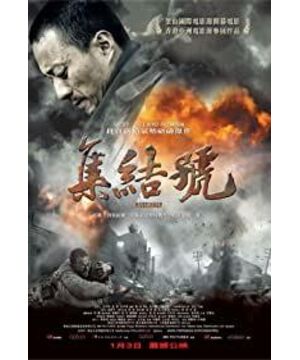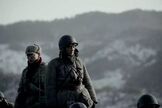This reflects two situations:
1. The regimental commander knew clearly that the soldiers of the Jiu Company were in desperate situation because of the severance, and did not look for survivors or war death certificates afterwards;
2. For the captured: the relative compensation for the missing is relatively low (the disappearance seems to be the Captive/surrender is synonymous); missing person’s pension: 200 catties of millet; confirmed martyrs’ pension: 700 catties of millet; "500 catties difference", this is the difference in the pension disclosed in the movie.
Now, you can often see reports of the United States searching for missing persons in the war: from the Korean War to the Vietnam War, and the recent wars in Afghanistan and Iraq. For missing persons/survivors, as long as the death certificates such as military badges (identity cards) are not returned to the government, the government will think that the soldiers are still alive and their families can continue to receive salaries, etc.; and the government will spare no effort to find the remains of the missing or Other death certificates. This may be the difference in the views of individual values in different social realities...
Anyway: pay tribute to the people who sacrificed in the war. I hope this movie will advance the soldier's identity card system.
Attachment: Introduction to the Soldier Identity Card System
http://news.xinhuanet.com/mil/2006-06/07/content_4656099.htm
It was the United States that was the first to use identity cards as official equipment to issue officers and soldiers. In 1916, the United States officially equipped the Marines stationed in France with identification badges, requiring all officers and soldiers to wear them around their necks when performing field missions. At other times, it can be worn or kept in a safe place. Beginning in 1918, the U.S. and British troops also compiled a code for each officer and soldier who participated in the war to appear on the identity card, which the officers and soldiers called the bugle. At the beginning, one per person was hung around his neck, and at the end of the war it was increased to two per person. When officers and soldiers are killed, their comrades will put one of the two identity cards of the deceased into the deceased’s mouth, and the other will be wrapped with the deceased’s clothing for the after-care personnel to properly dispose of them according to the records on the identity cards. When the deceased cannot be transported back to the country for burial in time, the ambulance team can also take away an identity card as a death certificate. When officers and soldiers retire, one needs to be handed over to the unit where they belong for unified custody, and the other can be kept by the individual for life.
In the early days of World War II, the militaries of various countries made new improvements to identity cards. The shape is changed from round, hexagonal and octagonal to oval or rectangular with arches on both sides. Aluminum alloy is also used to replace copper and aluminum. The chain is also changed from cloth strips and thin leather ropes to beaded. The aluminum alloy chain makes the identity card more solid and durable.
In 1939, Germany issued uniform identity cards to soldiers. During World War II, Japan also issued bronze identity cards to officers and soldiers.
http://zqb.cyol.com/content/2006-03/17/content_1337201.htm
Allocate military ID cards in combat troops.
Zhai Zhenhua told reporters: "A simple identity card embodies a kind of scientific management. a form of government for military aid, assistance and commitment are still looking for the remains of victims even after many years, reflecting social care for the soldiers embark on the road of war. "
fill identity was not practical on clothes
for a long time, our military Following the practice of the former Soviet army, in previous operations such as the War of Resistance Against Japanese Aggression, the War of Liberation, and the War to Resist US Aggression and Aid Korea, a square seal was used to stamp the name, unit, and blood type on the designated position of the clothes and hat. You can use a brush or pen. Fill in these personal data for identification. This practice is still in use today. "This kind of identification method has played a certain role in previous battles."
But in modern warfare, the shortcomings of this method are very obvious. With the widespread application of science and technology in the military field, the lethality and destructive power of weapons have increased unprecedentedly. When the officers and soldiers were killed or wounded, many of them were bloody and incomplete. The existing identity signs of our army are easily burnt, corroded and damaged, and are no longer suitable for the needs of war under high-tech conditions. It is urgent to reform the identity signs of officers and soldiers. "Considering that our army has not formally issued ID badges before, and lacks due practical experience, it is recommended that based on full investigation and demonstration, first allot them in combat units below the division, and when the conditions are ripe, then allocate them to the whole army. send."
View more about Ji jie hao reviews











